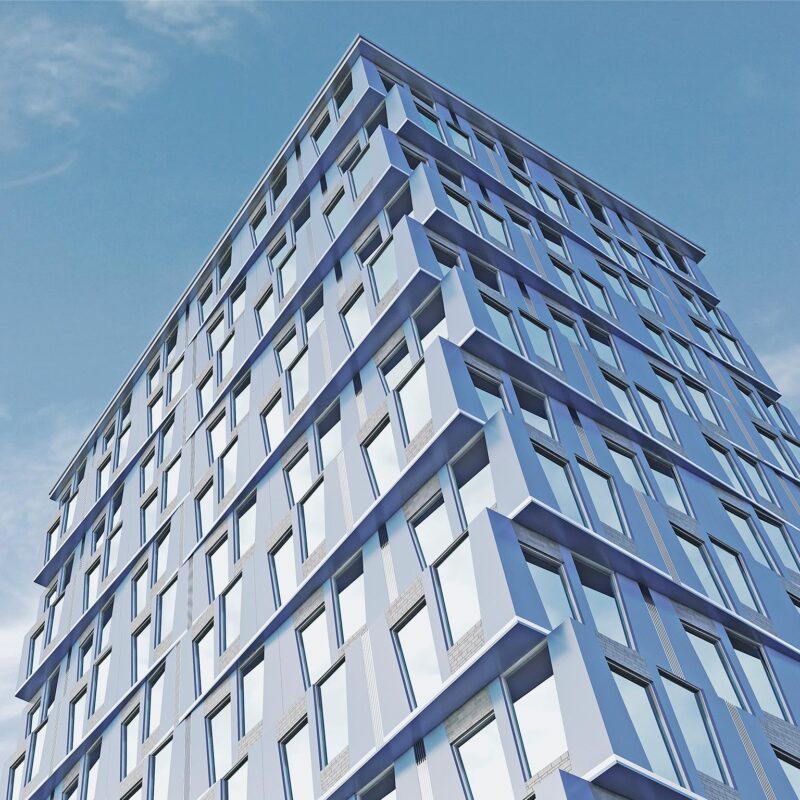Prefabrication and modular construction have been increasingly popular in commercial building projects due to their cost-effectiveness, speed of assembly, and environmental sustainability. These methods are transforming the way that architects design and construct buildings, from single-family homes to large multi-story complexes.
By utilizing prefabricated components such as walls or roof trusses in a factory setting before they are shipped to the job site, builders can reduce labor costs while also minimizing waste.
Additionally, because modular construction involves using manufactured sections that fit together seamlessly onsite with minimal disruption to local communities during installation, it is becoming an attractive solution for many developers looking for more efficient ways of constructing buildings.
In this article, we will explore how prefabrication and modular construction are revolutionizing the commercial building industry. Be sure to check out the buildops commercial construction software glossary to optimize your business in full!
Advantages of Prefabrication and Modular Construction

Prefabrication and modular construction play a major role in the commercial building industry. These methods offer many advantages to builders, including speed of construction, cost savings, improved safety, and quality control. Speed is one of the most significant benefits that prefabrication and modular construction can provide for commercial projects.
By constructing components offsite and shipping them to be installed on-site, entire sections of a project can be completed much more quickly than traditional building methods allow. This often allows projects to meet tight deadlines or move ahead faster than expected. Cost savings are another advantage offered by prefabricated modules and other parts used in commercial buildings.
By keeping production centralized at an off-site facility, costs associated with labor are reduced significantly compared to having multiple crews working on-site simultaneously. Furthermore, materials purchased in bulk have lower per-unit prices than individual purchases made at retail stores or hardware outlets; this also helps reduce overall costs without sacrificing quality or safety standards.
The use of prefabricated structures also improves workplace safety as it reduces the need for workers to work at high heights – a common risk factor within the industry – as well as reduces exposure time when using hazardous materials such as asbestos or fiberglass insulation commonly found in older buildings during demolition phases of the projects life cycle.
In addition, since all components are created under controlled conditions inside factory settings there is greater assurance that they comply with design specifications which leads to higher reliability throughout the finished structure’s operational phase over its lifespan.
Challenges Faced in Utilizing Prefabrication for Commercial Building Projects

Prefabrication and modular construction are increasingly being utilized in commercial building projects, offering many benefits such as enhanced efficiency and cost-effectiveness. However, there are still several challenges that need to be addressed before these systems can become widely adopted.
Firstly, the process of prefabricating components offsite requires a significant amount of coordination between the project team members, who must coordinate their efforts to ensure all components arrive on-site at the right time and place.
Secondly, prefabricated units may require specialized tools or skills for installation which can increase costs if subcontractors have to be hired for this purpose. Finally, due to their nature as standardized units, it is often difficult to customize precast modules so they fit seamlessly into existing architecture or landscape design schemes.
These issues highlight some of the important considerations that should be taken into account when deciding whether or not prefabrication is an appropriate solution for any given commercial project.
Best Practices for Ensuring Successful Integration of Prefabricated Components into Commercial Buildings
The successful integration of prefabricated components into commercial building projects is an important factor in ensuring the project runs smoothly and meets all of its goals. To help ensure successful integration, certain best practices should be followed.
First and foremost, it is crucial to make sure that any prefabricated component chosen for the project fits properly within the desired design specifications. Architects and engineers should carefully consider any necessary modifications before installation begins to minimize potential issues during construction or afterward.
Additionally, architects and engineers need to plan for proper installation, considering access points as well as what tools will be needed onsite to install each component correctly and efficiently.

Another key part of a successful integration process includes close collaboration between designers and suppliers throughout the entire process from conception through completion.
This helps ensure that everyone involved has clear communication regarding scope, pricing, delivery timescales, quality control measures, health & safety concerns, etc., further minimizing potential problems down the line when installing prefabricated elements into commercial buildings.
Finally – with an eye toward long-term success – it’s essential to establish realistic expectations before beginning work on integrating pre-fabricated components into a construction project; this includes understanding both how much time it may take for each elements installation as well as being aware of any limitations imposed by existing structural conditions which could affect the overall timeline or budget constraints set forth by stakeholders involved in the build itself.
By adhering closely to these best practices throughout every step of the process, architects can maximize their chances of achieving their goals while also helping create durable, high-quality structures built upon reliable foundations.


